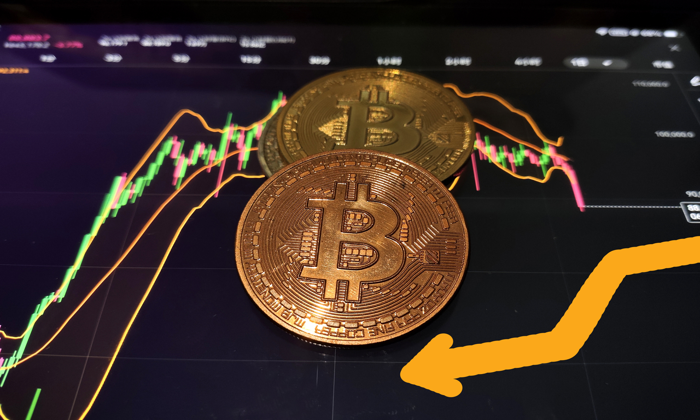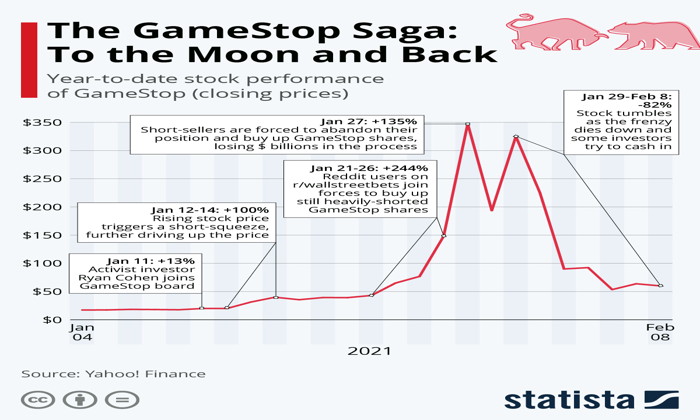Solo Bitcoin mining has recently gained traction as individual enthusiasts embark on their journey to secure Bitcoin rewards without the backing of larger mining pools. This unconventional approach to Bitcoin mining highlights a significant shift in how hobbyist Bitcoin miners strategize to navigate the increasing Bitcoin mining difficulty. With a growing number of solo miners successfully processing blocks and earning considerable rewards, the landscape of Bitcoin mining is evolving, inviting more participants to try their hand at this decentralized venture. Solo mining, while akin to playing the lottery, has seen sporadic successes that excite the community. As both seasoned miners and newcomers explore this thrilling opportunity, questions arise about the viability of solo efforts in a pool-dominated industry and whether anyone, regardless of resources, can achieve Bitcoin mining success.
With the rise of independent cryptocurrency miners, the term ‘solo mining’ encapsulates the experience of individuals venturing into Bitcoin generation without joining a collective mining group. While traditional Bitcoin mining pools dominate the scene, these independent operators are challenging the established norms by processing blocks on their own. More enthusiasts are now harnessing personal mining hardware to chip away at Bitcoin mining difficulty and earn rewards that once seemed elusive. This shift not only reinvigorates interest among hobbyist miners but also raises vital discussions around decentralized mining and its role in the cryptocurrency ecosystem. As these solo miners celebrate individual successes, the conversation continues about their impact on the larger Bitcoin economy.
The Rise of Solo Bitcoin Mining
In recent months, solo Bitcoin mining has witnessed a remarkable resurgence, with individual miners claiming significant blocks and rewards. This shift has largely been influenced by a new wave of hobbyist miners equipped with affordable mining rigs. Notable successes have emerged, including miners pulling in substantial earnings like 3.125 BTC for a single block. Such achievements suggest that while the chances may still resemble a lottery, the landscape of Bitcoin mining is evolving, making it more accessible for the everyday enthusiast.
The increase in solo Bitcoin mining victories reflects a broader trend where hobbyist miners are no longer solely reliant on established mining pools. Instead, they are taking matters into their own hands, utilizing equipment like the FutureBit Apollo. As more individuals venture into solo mining, the community is beginning to witness a diversification of mining operations. This trend signals a potential shift in the mining paradigm, allowing more players to engage with the Bitcoin network directly and challenge the dominance of major mining corporations.
Understanding Solo Mining Rewards vs. Mining Pools
Solo mining rewards can be immensely appealing, especially for those operating on personal rigs. Unlike Bitcoin mining pools, where rewards are shared among participants, a solo miner retains the entire block reward when successful. This means that while the odds are indeed daunting, the payoff can be life-changing. The allure of potentially earning hefty sums like $266,000 from a single block can motivate hobbyists to explore solo mining, despite the inherent risks.
Contrastingly, mining pools provide a safety net by reducing variance in rewards through collective resource sharing. However, many miners are starting to question the necessity of pooling resources, especially given the recent successes attributed to solo miners. For many Bitcoin enthusiasts, the bonus of solo mining is not just financial; it’s about promoting decentralization in the Bitcoin network, ensuring that individual efforts contribute to a broader goal of a more distributed and resilient cryptocurrency system.
Navigating Bitcoin Mining Difficulty
Bitcoin mining difficulty is a crucial factor affecting both solo miners and those participating in pools. Recently, the network’s difficulty has seen fluctuations, particularly easing during market downturns, making solo mining somewhat more approachable for hobbyist miners. As Bitcoin prices have dipped, a drop in mining difficulty has allowed miners using lower hash rates to find blocks, albeit with a still slim chance of success. This temporary reprieve has emboldened some to attempt solo mining even with minimal resources.
However, the crypto market is always in flux, and experts predict that as market conditions improve, mining difficulty will likely rise again. For hobbyist miners, this presents a challenge as they weigh their options between solo efforts and joining more established mining pools. The landscape remains uncertain, but those committed to the ethos of decentralization are encouraged to continue venturing into solo mining, aiming to contribute to a more equitable distribution of mining rewards.
The Equipment Behind Successful Solo Miners
The type of equipment used by solo Bitcoin miners plays a significant role in their success. Many individual miners are now leveraging affordable and efficient setups, such as the FutureBit Apollo miners, which have gained traction among enthusiasts. Such equipment is often designed for accessibility, with prices typically ranging from $200 to $500, making them appealing for those looking to find their footing in the competitive mining landscape.
The performance of these mining rigs is critical, especially in the context of current Bitcoin mining difficulty. As more individuals share their stories about successful solo mining experiences utilizing these budget-friendly miners, it underscores the potential for new players to join the Bitcoin mining community. The popularity of devices that can deliver modest yet effective hash rates is bringing a new dimension to how individuals approach solo mining, leading to increased interest and participation.
The Importance of Decentralization in Bitcoin Mining
Decentralization remains a cornerstone principle of Bitcoin and its underlying philosophy. As solo miners continue to achieve success, it raises an important discussion about the centralization of mining due to large corporations dominating the industry. Many Bitcoin advocates believe that decentralizing mining operations is crucial for the future of the network, ensuring that it remains resilient against potential threats and monopolization.
Solo mining represents an avenue for individuals to contribute to this decentralization effort, allowing voices from the grassroots level to impact the Bitcoin ecosystem. As miners forge their paths and share their experiences, the movement towards a less centralized mining landscape continues to grow. Many Bitcoin enthusiasts advocate for a mining environment that empowers individuals, enabling them to directly support the network while simultaneously enjoying the thrill and rewards of solo mining.
Impacts of Market Trends on Hobbyist Bitcoin Miners
Market trends have a profound effect on hobbyist Bitcoin miners, influencing not just their profitability but also their operational decisions. In recent months, the decline in Bitcoin’s price has temporarily resulted in lower mining difficulty, creating a window of opportunity for solo miners to step in and attempt their hand at block discovery. This trend has also sparked a renewed interest in solo mining as more individuals seek to capitalize on seemingly favorable market conditions.
However, volatility in the crypto market is not an uncommon occurrence. As market conditions shift, hobbyist miners must stay informed and adaptable to ensure their mining efforts remain viable. The landscape is constantly changing, and those actively engaged in solo mining need to understand external market influences and trends on mining difficulty to strategically plan their investments in equipment and energy.
The Evolution of Hobbyist Mining Rigs
The evolution of hobbyist mining rigs has been marked by technological advancements that have significantly lowered entry barriers for individual Bitcoin miners. Once reserved for large companies with extensive resources, mining equipment is now more affordable and efficient than ever before. This democratization of mining technology empowers individuals to invest in rigs that can effectively participate in the Bitcoin network from home.
As such, hobbyists are increasingly choosing to experiment with tools like the Bitaxe and FutureBit Apollo miners. These machines, providing a good balance between price and performance, are helping foster a vibrant community of DIY miners. This evolution not only enhances the chances of solo success but also strengthens the overall Bitcoin ecosystem by promoting a diverse and enthusiastic group of participants actively contributing to the network.
Success Stories from Solo Miners
The rise in success stories from solo miners serves as a testament to the potential rewards of this independent approach to Bitcoin mining. Anecdotes of individual miners celebrating their victories—such as processing a block and netting substantial Bitcoin rewards—are becoming increasingly common. These narratives inspire others to explore the world of solo mining, illustrating that with the right equipment and a bit of luck, remarkable achievements can occur.
Moreover, these success stories often highlight the personal journeys of hobbyists who started with modest setups and, through persistence and learning, have managed to carve out a niche within the competitive mining landscape. Such stories encourage community engagement and motivate newcomers to join, demonstrating that the spirit of Bitcoin mining is alive and thriving among solo miners.
Challenges Faced by Solo Bitcoin Miners
Despite the allure of solo Bitcoin mining, there are significant challenges that individuals must navigate. The primary hurdle remains the steep mining difficulty which can make earning a block reward feel nearly impossible for hobbyists. Many solo miners contend with the reality that even the most specialized rig may yield minimal success during their endeavors. The unpredictable nature of the Bitcoin network often leads to feelings of frustration and uncertainty.
Additionally, the requirement for ongoing operational expenses such as electricity can further complicate the mining landscape for solo participants. While some miners might be fueled by passion and the potential for decentralization, the financial implications of solo mining require careful consideration and analysis to ensure a sustainable approach. Understanding these challenges can help aspiring solo miners to prepare for the realities of operating independently within the Bitcoin ecosystem.
Frequently Asked Questions
What is solo Bitcoin mining and how does it differ from mining pools?
Solo Bitcoin mining involves individuals or small groups mining Bitcoin independently without pooling their resources with others. Unlike mining pools, where miners combine their hash rate to increase the chances of solving a block and share rewards, solo miners tackle the challenge alone and receive the entire block reward if they are successful. This method can be akin to playing the lottery, as the chances of earning rewards are significantly lower without the combined effort of a pool.
Can hobbyist Bitcoin miners successfully mine Bitcoin alone?
Yes, hobbyist Bitcoin miners can achieve success in solo Bitcoin mining, although it’s rare. Recent increases in solo mining successes indicate that with the right equipment and conditions, individuals with home setups—including affordable rigs like FutureBit Apollo—can process blocks. However, these successes remain sporadic, and the overall odds are still quite low due to the high Bitcoin mining difficulty.
What are the potential rewards for solo Bitcoin mining?
The potential rewards for solo Bitcoin mining can be substantial; for example, recent winners have secured rewards upwards of 3 BTC or more, depending on the current Bitcoin price and transaction fees. Nonetheless, it’s important to understand that these rewards come with high risks due to the unpredictable nature and low probability of successfully mining a block alone.
How does Bitcoin mining difficulty affect solo Bitcoin miners?
Bitcoin mining difficulty has a significant impact on solo Bitcoin miners’ success rates. As the difficulty increases, the chances of mining a block decline, making it more challenging for solo miners to succeed. However, during bear markets or price corrections, mining difficulty can decrease slightly, which may give solo miners brief opportunities to find rewards. Despite these fluctuations, sustained success in solo mining is still quite rare.
Are there tools or services that can help solo miners increase their success?
Yes, services like Solo CKPool allow solitary miners to engage in solo Bitcoin mining while using pooled resources for anonymity and support in connecting to the network. This service enables miners to keep the full reward of any successful block found, making it a preferred option for hobbyist Bitcoin miners who want a degree of independence while enhancing their chances.
What is the trend of solo Bitcoin mining rewards lately?
There has been a noticeable increase in solo Bitcoin mining rewards recently, with solo miners winning more blocks than in previous years. Reports suggest that in 2023, solo miners solved 12 blocks, compared to just 7 in 2022. The rise of hobbyist rigs has contributed to this trend, although the overall mining success rates for solo miners remain low compared to mining pools.
Is solo Bitcoin mining a feasible hobby for the average person?
Solo Bitcoin mining can be a feasible hobby for the average person, particularly with the availability of affordable mining rigs. However, potential miners should be aware that the financial rewards are uncertain, and the primary motivation for many is the desire to contribute to Bitcoin’s decentralization rather than to generate profit. Understanding the risks and the realities of mining difficulty is essential for anyone considering this venture.
What role does decentralization play in the motivation behind solo Bitcoin mining?
Decentralization is a core motivation for many solo Bitcoin miners. By mining independently, they contribute to a less centralized Bitcoin network, which is believed to enhance the currency’s resilience and integrity. For many hobbyist miners, the pursuit of mining Bitcoin is not solely about profits, but rather a commitment to maintaining Bitcoin’s decentralized nature.
| Key Point | Details |
|---|---|
| Rise in Solo Mining | Increase in individual and hobbyist miners celebrating solo victories. |
| Recent Successes | Solo miners processed 16 blocks in 2024, up from 7 in 2022. |
| Solo CKPool | Offers anonymous mining without requiring a full Bitcoin node. |
| Group vs Individual Mining | Mining pools dominate industry, solo mining is still a challenge. |
| Accessibility of Mining Rigs | Affordable hobby rigs like Bitaxe and FutureBit Apollo gaining traction. |
| Mining Difficulty Changes | Network difficulty recently decreased but likely to rise again. |
| Decentralization Efforts | Focus on making mining accessible and decentralized among enthusiasts. |
Summary
Solo Bitcoin mining has seen a notable uptick in success, with individual miners achieving significant rewards in recent months. While there remains skepticism about the sustainability of this trend, the increased accessibility of affordable mining rigs is empowering more enthusiasts to participate in the network. As the Bitcoin landscape continues to evolve, the balance between large-scale mining operations and grassroots efforts aims to preserve the decentralized ethos of cryptocurrency.
Solo Bitcoin mining has emerged as an intriguing avenue for individual enthusiasts looking to dive into the world of cryptocurrencies. Recently, the concept has gained traction, with hobbyist Bitcoin miners celebrating unexpected victories through their personal rigs. These solo mining efforts highlight an essential facet of Bitcoin mining success, shedding light on the allure of potential solo mining rewards, which can sometimes rival those obtained from larger Bitcoin mining pools. However, with the ever-evolving Bitcoin mining difficulty and competitive landscape, many wonder if casual miners can truly succeed without the backing of expansive setups. As interest in decentralized mining strategies grows, the conversation around solo mining becomes increasingly relevant.
The practice of individual Bitcoin extraction, often referred to as solitary mining, has piqued the interest of many in the cryptocurrency community. Many amateur miners are now exploring this direction, hoping to reap their portion of blocks while operating independently from larger mining collectives. This shift in focus reflects a growing desire among hobbyists to unlock the rewards of mining without joining Bitcoin mining pools. The competing dynamics of network difficulty and the pursuit of mining autonomy are intriguing themes within this evolving landscape. As solitary mining gains visibility, its implications for the future of Bitcoin’s decentralized ethos are worth exploring.














